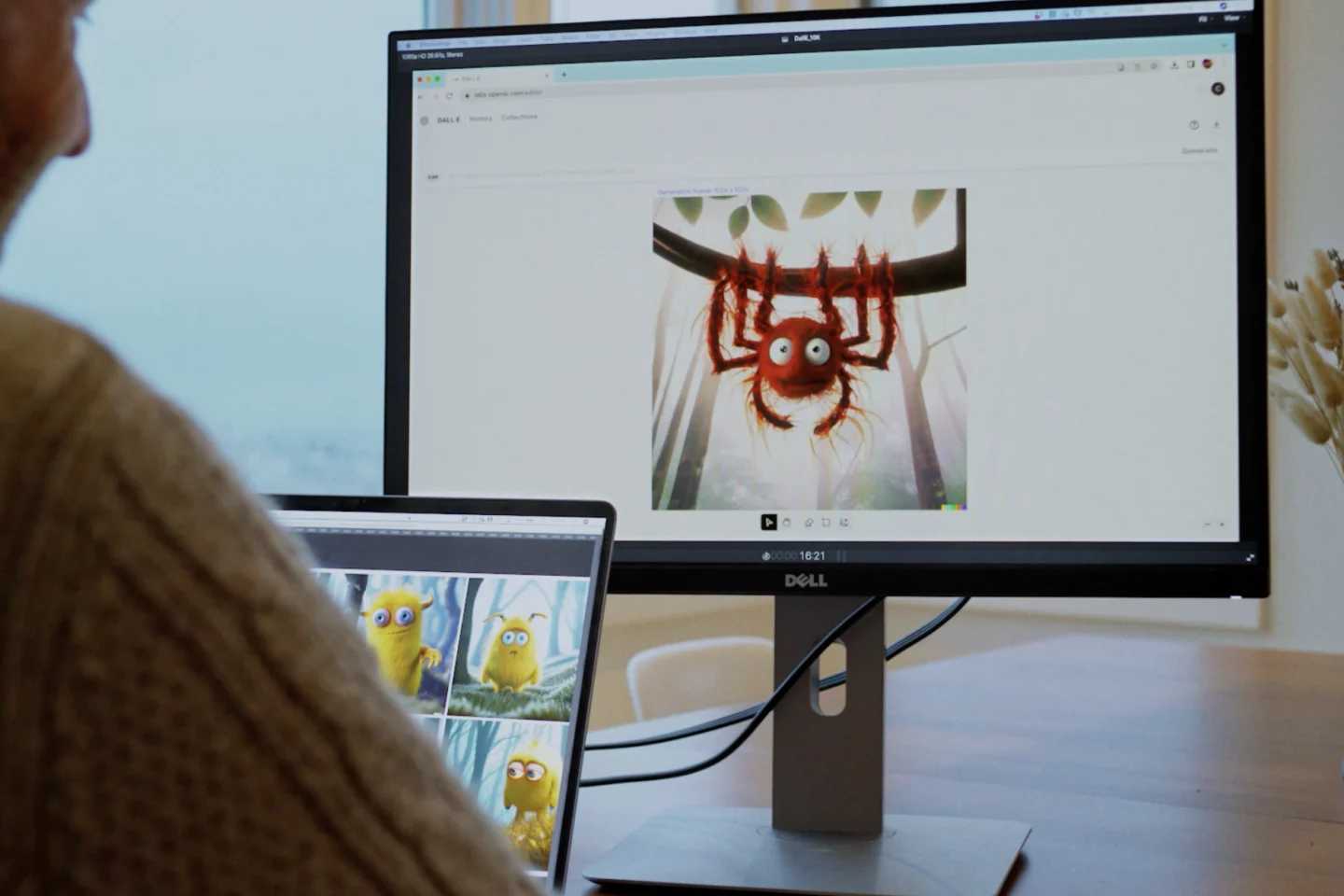OpenAI is making its boldest move into Hollywood yet, backing “Critterz,” a feature-length animated film created largely with artificial intelligence tools, scheduled to premiere at the Cannes Film Festival in May 2026. The project represents a landmark test case for AI in cinema, aiming to prove that generative technology can revolutionize filmmaking with dramatically reduced costs and production timelines.
From DALL-E Experiment to Feature Film: The “Critterz” Origin Story
“Critterz” began as a 5-minute short film created in 2023 by Chad Nelson, now a creative specialist at OpenAI, using the company’s DALL-E image generation tool. The original short, which scored 3.4/10 on IMDb but garnered industry attention at festivals including Annecy, Tribeca, and Cannes Lions, served as a proof-of-concept that combined AI-generated visuals with traditional animation techniques. “Filmmaking has been a passion of mine and DALL-E helped realize my creative vision,” Nelson explained. “With DALL-E, now anyone can be a creator telling a new or reimagined story.”
The animated science documentary-turned-comedy follows mysterious forest creatures with unexpected personalities, featuring a narrator’s investigative journey that takes a comedic turn when the Critterz themselves interrupt the documentation. The positive response to the short film led producers to expand the concept into a full-length feature.
Hollywood Disruption: $30 Million Budget, 9-Month Timeline Challenge Industry Norms
The feature-length “Critterz” boasts a production budget under $30 million and an ambitious 9-month production timeline—dramatically undercutting traditional animated features that typically cost $100-200 million and require 3-4 years of development. For comparison, Disney’s “Inside Out 2” carried a $200 million budget, while “Tangled” exceeded $200 million in production costs.
London-based Vertigo Films and Los Angeles studio Native Foreign are co-producing the project, with funding provided by Vertigo’s Paris-based parent company, Federation Studios. The production team includes approximately 30 contributors sharing profits through a specialized compensation model, representing a new approach to AI-assisted filmmaking economics.
AI-Human Collaboration: GPT-5 Meets Traditional Storytelling
The film will utilize OpenAI’s latest GPT-5 model alongside the company’s suite of image-generation tools, but maintains significant human involvement throughout the creative process. Professional artists will create sketches that are then fed into AI tools for animation and enhancement, while human voice actors will bring characters to life. The script comes from James Lamont and Jon Foster, writers behind the successful “Paddington in Peru,” ensuring traditional storytelling expertise guides the AI-enhanced production.
“OpenAI can say what its tools do all day long, but it’s much more impactful if someone does it,” Nelson told the Wall Street Journal. “That’s a much better case study than me building a demo.” The production aims to demonstrate how AI can complement rather than replace human creativity, with technology handling time-intensive tasks like in-betweening and texture generation while humans retain creative control over direction, character design, and narrative structure.
Industry Resistance and Legal Battles: Hollywood’s AI Divide
The “Critterz” project launches amid intense legal battles between major studios and AI companies over intellectual property rights. Disney, Universal, and Warner Bros. Discovery have filed copyright infringement lawsuits against AI firm Midjourney, alleging unauthorized use of their characters in training data. The 2023 SAG-AFTRA strike secured new protections against AI-generated digital likenesses, reflecting widespread industry concerns about technology’s impact on creative careers.
James Richardson from Vertigo Films emphasized that the original short film demonstrated AI tools could help tell “beautiful and entertaining stories,” while Mikhail Kleverov from Native Foreign believes AI will “open new doors in storytelling.” However, industry skepticism remains high, with many questioning whether AI-assisted films can evoke the same emotional responses as traditional animation.
Previous AI Film Attempts: Mixed Track Record
“Critterz” won’t be the first AI-assisted animated feature to reach audiences. 2024 saw releases of “DreadClub: Vampire’s Verdict” (created with a $405 budget) and “Where the Robots Grow,” both receiving mixed critical and audience reactions. These earlier attempts faced criticism over whether current AI technology can produce cinema-quality content that resonates emotionally with viewers.
The original “Critterz” short film itself received polarized responses, with supporters praising its technological innovation while critics questioned the authentic emotional connection typically associated with human-created animation.
Global Theatrical Release and Industry Impact
Following its anticipated Cannes debut, “Critterz” is planned for worldwide theatrical release in 2026. The project’s success could influence major studios’ adoption of AI technology, potentially reshaping animation production economics across Hollywood. With casting decisions expected within the coming weeks and production already underway, “Critterz” represents OpenAI’s most visible demonstration of AI’s creative capabilities.
The film’s reception will likely determine whether AI becomes a standard tool in animation studios or remains relegated to experimental projects. As Richardson from Vertigo Films noted, the goal is to complete the film “in just nine months,” proving that AI can accelerate traditional production timelines while maintaining creative quality.
Whether audiences will embrace AI-assisted storytelling remains the ultimate test for this groundbreaking cinematic experiment.



